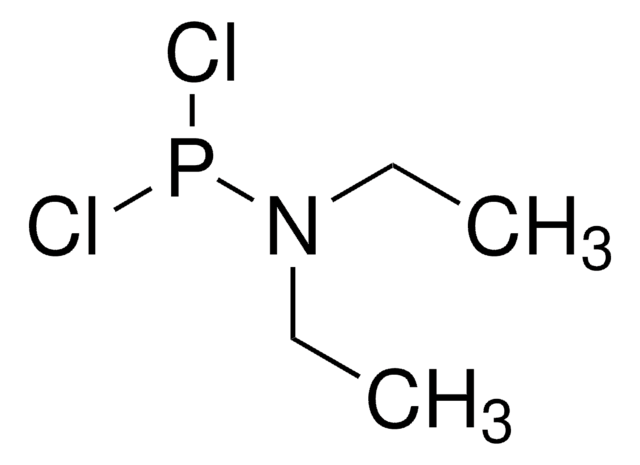According to The Sigma-Aldrich Handbook of Stains, Dyes and Indicators, Rose Bengal is soluble in water at 100 mg/mL, ethanol at 30 mg/mL and 2-methoxyethanol at 60 mg/mL. Conn's Biological Stains (10th Edition) states Rose Bengal has a solubility of 36% in water and 8% in ethanol.
330000
Rose bengal
Dye content 95 %, ≥96% (HPLC)
Sinônimo(s):
4,5,6,7-Tetrachloro-2′,4′,5′,7′-tetraiodofluorescein disodium salt, Acid Red 94, Bengal Rose B sodium salt, Rose Bengal sodium salt
Selecione um tamanho
Selecione um tamanho
About This Item
Produtos recomendados
Ensaio
≥96% (HPLC)
Formulário
solid
composição
Dye content, 95%
técnica(s)
titration: suitable
cor
red to brown
ε (coeficiente de extinção)
≥ 3000 at 350-354 nm
≥12000 at 311-315 nm
≥32000 at 262-266 nm
≥32000 at 513-517 nm
≥98000 at 546-550 nm at 0.04 g/L (H2O + 1ml 1% Na2CO3)
aplicação(ões)
diagnostic assay manufacturing
hematology
histology
temperatura de armazenamento
room temp
cadeia de caracteres SMILES
[Na+].[Na+].[O-]C(=O)c1c(Cl)c(Cl)c(Cl)c(Cl)c1C2=C3C=C(I)C(=O)C(I)=C3Oc4c(I)c([O-])c(I)cc24
InChI
1S/C20H4Cl4I4O5.2Na/c21-10-8(9(20(31)32)11(22)13(24)12(10)23)7-3-1-5(25)16(29)14(27)18(3)33-19-4(7)2-6(26)17(30)15(19)28;;/h1-2,29H,(H,31,32);;/q;2*+1/p-2
chave InChI
UWBXIFCTIZXXLS-UHFFFAOYSA-L
Procurando produtos similares? Visita Guia de comparação de produtos
Categorias relacionadas
Descrição geral
Código de classe de armazenamento
11 - Combustible Solids
Classe de risco de água (WGK)
WGK 3
Ponto de fulgor (°F)
Not applicable
Ponto de fulgor (°C)
Not applicable
Equipamento de proteção individual
Eyeshields, Gloves, type N95 (US)
Escolha uma das versões mais recentes:
Certificados de análise (COA)
Não está vendo a versão correta?
Se precisar de uma versão específica, você pode procurar um certificado específico pelo número do lote ou da remessa.
Já possui este produto?
Encontre a documentação dos produtos que você adquiriu recentemente na biblioteca de documentos.
Os clientes também visualizaram
-
What is the solubility of Rose Bengal, Product 330000?
1 answer-
Helpful?
-
-
What types of applications can Product 330000, Rose bengal be used for?
1 answer-
According to the literature, Rose bengal has been used in a used in neutrophil adherence test and as a generator of singlet oxygen when exposed to laser energy. See: McKinnon, J. , Expt. Med., 164, 1864, (1986) and Gamble and Vadas, Science, 242, 97, (1988).
Helpful?
-
-
What is the Department of Transportation shipping information for this product?
1 answer-
Transportation information can be found in Section 14 of the product's (M)SDS.To access the shipping information for this material, use the link on the product detail page for the product.
Helpful?
-
-
What is the quantum yield of Rose bengal, Product 330000?
1 answer-
According to the literature, the quantum yield of Rose bengal is 0.11. See: Seybold, P.G., et al., Calorimetric, photometric and lifetime determinations of fluorescence yields of fluorescein dyes, Photochem. Photobiol., 9, 229-242 (1969).
Helpful?
-
Active Filters
Nossa equipe de cientistas tem experiência em todas as áreas de pesquisa, incluindo Life Sciences, ciência de materiais, síntese química, cromatografia, química analítica e muitas outras.
Entre em contato com a assistência técnica









